Whether you are renovating or building a new house, selecting the right contractor is crucial. They can help you in completing the construction project on time and under budget. Here are some details about construction contractors that a developer should know.

Roles of a contractor in real estate project
The major role of a contractor is to build the project according to the architect's and consulting team's designs and specifications within the contract's schedule and budget constraints.
In other words, the real estate contractor buys the materials, hires the craftsmen, and hires subcontractors to do the task. The subcontractors are accountable to the contractor and not the property developer.
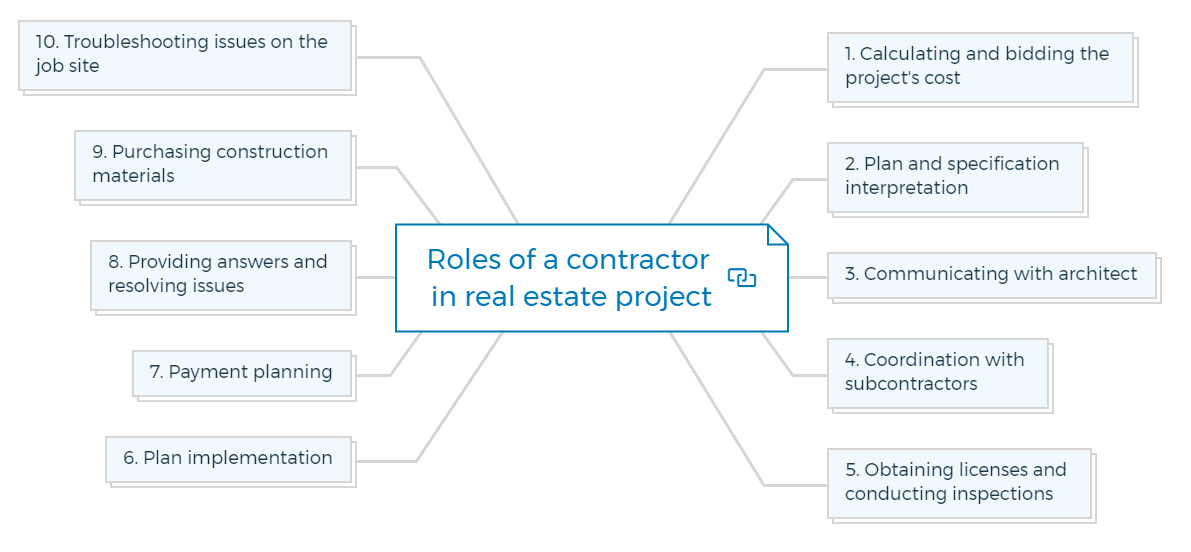
1. Calculating and bidding the project's cost
A contractor prepares the development cost and submits it to the developer. They should create a realistic cost plan and have it reviewed by numerous subcontractors and others in their office for accuracy. This phase is especially crucial when the contract is for cost plus a certain contractor fee.
2. Plan and specification interpretation
Any misreading of the plans and specifications could cost the contractor and subcontractors a lot of money. Along with interpreting plans, a contractor must consider how best to construct the facility, where to locate the site office, access for materials and vehicles, fencing, and other factors.
3. Communicating with architect
When you hire an architect or architectural designer, the building contractor will collaborate to ensure that the real estate project runs well. Before any construction begins, the architect and the contractor will review the designs together. If a difficulty arises, the architect will frequently ask the contractor for advice.
4. Coordination with subcontractors
It is not a simple task to supervise - hire and negotiate contracts with subcontractors, then slot them into schedules in line with the building contract. Contractors with solid leadership abilities have devoted subcontractors who know the requirement and efficiently run the construction process.
5. Obtaining licenses and conducting inspections
Before a contractor or a subcontractor can destroy, build, or improve a structure, they must first obtain specific licences. Because the contractors are familiar with the process, they know which permissions are required.
The contractor will also schedule required inspections, meet with building inspectors on the job site, and collaborate on any requested revisions.
6. Plan implementation
A contractor must ensure that the program for completion is implemented on a daily basis. It entails ensuring that all employees and subcontractors operate within their designated areas by setting a plan for workers and subcontractors and ensuring that all materials arrive on time.
7. Payment planning
The contractor must design a payment plan based on work progress and evaluate and analyse the budget to ensure that the project is under the budget set out at the beginning.
8. Providing answers and resolving issues
The contractor must visit the job site regularly, inspect the work, answer questions, and resolve problems. If not, a subcontractor needs to wait or make guesses about what is necessary, leading to delays or blunders that disrupt workflow.
9. Purchasing construction materials
The contractor is in charge of negotiating and ordering construction materials for a particular subcontractor. Payment, as well as timely delivery and proper on-site storage of items, are critical.
10. Troubleshooting issues on the job site
A construction contractor should be aware of the changing nature of a construction project at all times, assessing progress and being prepared to troubleshoot any on-site issues and make necessary changes.
The contractor is responsible for any on-site emergency during the construction process.

Mastermind Your 1st (or Next) Development
7 Day Challenge
This 7 Day Mastermind Challenge is not just a course. It includes my step-by-step, decision-making frameworks, my go to feasibility tool to vet projects in under One Minute & actionable mind maps showing you my property development process, and property selection strategies.
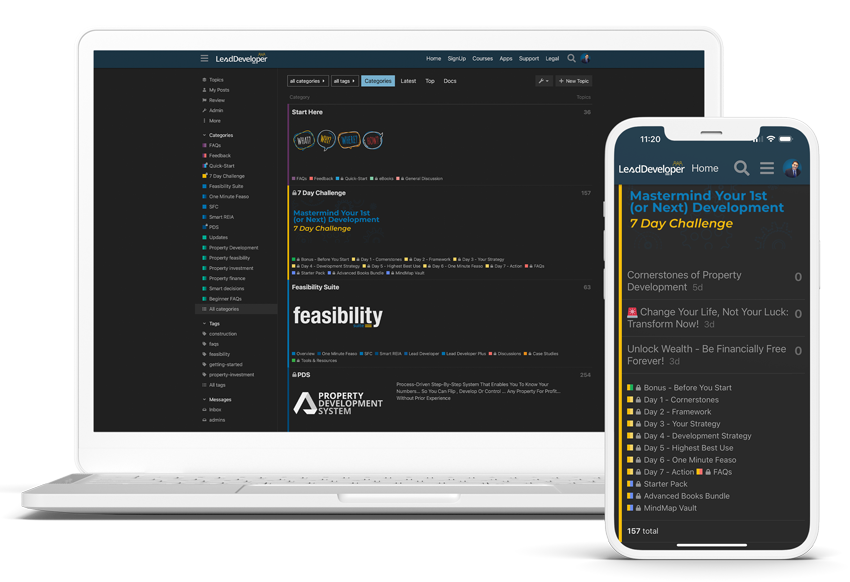
What are the different types of contractors?
The developer should first examine the size and scope of the project before choosing a building contractor. Construction has its classification system. There are 3 categories of building contractors as Tier 1, 2, or 3.
The tier system assesses building contractors based on their project capability. It includes staffing, resources, experience, and, most significantly, financial capacity.
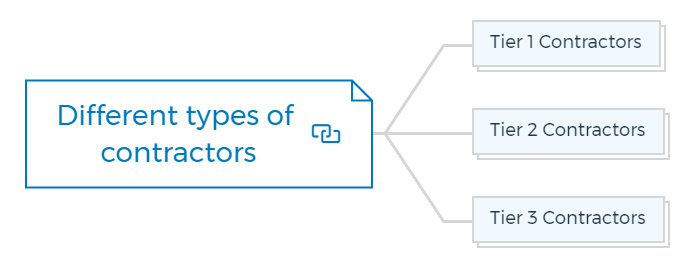
Tier 1 Contractors
Tier 1 construction companies are the biggest, wealthiest, and most experienced in the sector. These contractors work on major commercial projects like highways, trains, hospitals, universities, office towers, and shopping malls.
They have the knowledge, resources, and funds to handle such large-scale initiatives. Tier 1 contracts typically cost hundreds of millions of dollars.
Tier 2 Contractors
Building contractors in the mid-tier are still essential players in the construction business. Tier 2 contractors are more likely to take on commercial than residential projects. Some specialise in construction, such as shopping malls, industrial structures, or housing complexes.
Tier 3 Contractors
Tier 3 contractors, the most common, work on smaller projects. Residential buildings, including rebuilding and upgrading, and small-scale commercial projects, such as small office blocks, are typical contracts.
These contractors are critical to the industry, and as their portfolio grows, they will be able to advance up the tier ladder.
Learn More
How to choose the right construction contractor?
One of the first steps toward a significant property development project is locating, qualifying, and hiring a building contractor. A developer could enlist the help of an architect or project manager.
If they've been in the industry for a while, they'll have worked with many contractors in the area and will be able to tell you which ones are right for the job. The following checklist explains a developer's steps to qualify a contractor.
Request a capability statement from the contractor, which should include the following information:
- contractor's licence and registration number
- legal name, business address, phone numbers, and email
- number of years in the contracting business, education, and training
- company profile, including key personnel
- financial stability of the business and relationship with their bank
- information about prior and current projects
- references from previous customers who have worked on projects comparable to yours
Visit the contractor's current site to see if they:
- execute their trade skilfully and professionally
- provide adequate site supervision
- maintain a steady and reliable work crew
- have a strong relationship with subcontractors and other trades
- use materials efficiently and effectively
- keep the construction site clean and safe
Interview the current client of the contractor and ask the following questions:
- Is the contractor dependable and productive?
- Is the contractor adhering to the project's construction schedule?
- Is the contractor's team adequate for the project's size and scope?
- How does the contractor handle challenges on and off the job site?
- Have all stages of the work passed inspection?
- Can you reach the contractor via phone, voicemail, or email?
Once a contractor has been chosen, the developer and consulting team must use their management abilities to organize, coordinate, and control the contractor's work to complete it on time, on budget, and to the stated quality standards.
The developer should be willing to pay fair market value for work completed. The contractor may keep cash flow, pay overheads, suppliers, and subcontractors while still earning profit.
What are building contracts?
The accurate construction contract can make or break a real estate project's success. A construction contract should be tailored to the project's individual needs, considering its complexity and value.
Too often, an architect's previous experience with a particular contract helps in selection. Selecting an agreement based on familiarity with the terms and conditions may be insufficient to alleviate the challenges that may develop if the contract is improper for the project.
What to include in the construction contract?
Check that the contractor is currently licensed and registered with the proper authorities, such as a Building Registration Board, before signing a building contract.
Make sure to include the following in your construction contract:
- The contract must be worded in clear English and must be in writing.
- It should include all of the contract's terms and conditions in detail.
- Make sure the contract includes your name, the contractor's licence number, addresses of both parties.
- The scope of work, including drawings or specifications and any other relevant materials, must be clearly and thoroughly defined in the contract.
- The contract price, as well as whether or not it includes GST, should be specified explicitly.
- The project's start and finish dates are established, including time allowances for delays.
- It is necessary to mention the number of days allowed for unanticipated delays and adverse weather.
- The monetary amounts and timing of progress payments are indicated, and they are made following the completion of the work and with the bank's approval.
- All initial sum of prime cost items is clearly described, with sufficient costs allocated.
- A provision should declare that all work will adhere to the State Building Code and other legal requirements.
- There are definitions for all words and essential phrases used in the contract.
- All implicit guarantees and insurances that are required have been specified.
- It should include plans and specifications providing enough information to obtain a building permit for the work.
- If a deposit is necessary, make sure it is within the legal limit.
- The contractor has collected foundation data and a soil assessment and acknowledges that the site is acceptable for the proposed work.
It's worth noting that the contract officially begins the day the last signature is appended, and the other party is notified. This is the contract start date, which should not be confused with the project start date.
Items like tiling and landscaping are prime cost items for which the contractor cannot provide a firm estimate when the contract is signed, despite making reasonable inquiries. White goods and light fixtures are examples of preliminary sum items that have not been decided when the contract is signed.
In both circumstances, a provision will be made for the cost of the contract's prime price or provisional sum item. The owner will be credited if the allowable amount is greater than the item's cost. If the allowance is less than the cost, the contractor may charge a margin exceeding the budget.
Different types of construction contracts
When hiring a building contractor to complete your property development project in the construction sector, you have two options. These can be a readily available conventional or standard contract or a custom contract drafted by a construction lawyer to meet the unique requirements of a particular project.
A traditional contract is when the developer hires a team of consultants to plan the project and supervise the contractor's completion. The contractor is chosen based on their ability to complete the work and their pricing compared to other contractors.
The architect or project manager serves as the developer's expert and manager with delegated tasks and the developer's and contractor's first point of contact. A traditional technique, on the other hand, is ineffective when:
- Due to time constraints or early completion, there is insufficient time for traditional processes.
- The project is complex, and the scale of the project necessitates an early start before the technical drawings are completed.
- There is restricted access.
- The work is high-risk.
- The work is poorly defined.
A list of the various contracts you can negotiate with a contractor is provided below.
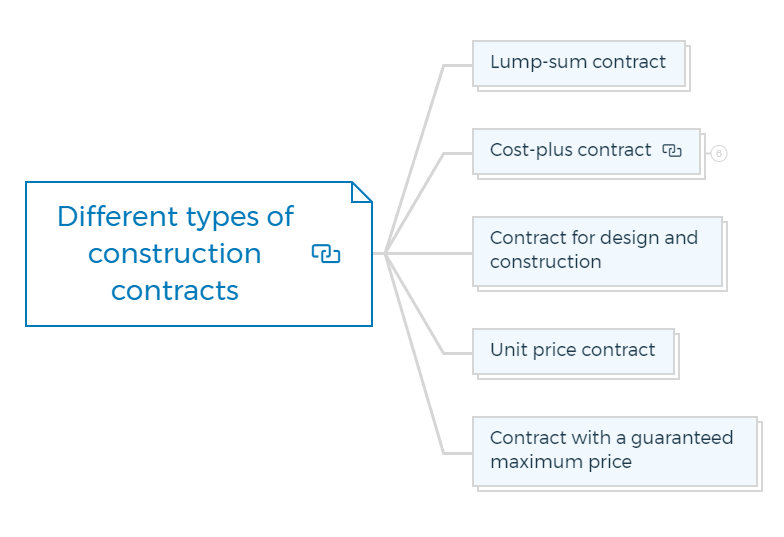
Lump-sum contract
A contractor agrees to build a project with a particular scope for a predetermined price under a lump-sum contract, often known as a fixed price contract. For residential constructions, this is the most typical contract type.
A lump-sum contract is appropriate if the project's scope and timeline are sufficiently established for the contractor to predict project expenses accurately. You can modify the lump-sum contract price in numerous ways. Examples are variations, revisions, or additions to the scope of work, such as prime cost or provisional sum adjustments. It's also possible that a single fixed-price contract won't cover the entire range of work. For example, you could have a separate agreement for any landscaping work done.
Cost-plus contract
The cost-plus contract is an alternative to the lump-sum agreement. It is critical to carefully evaluate such a contract before getting into it, as the final price has no upper limit so it can become very costly!
The developer agrees to pay the project's entire cost, including all trade contractor work, labour, materials, and equipment, plus a percentage for contractor overhead and profit.
These kinds of contracts are used when the scope of work, such as labour and materials, is unclear or when the developer wants to include or buy their own materials and choose their own subcontractors. Contracts could be written as follows:
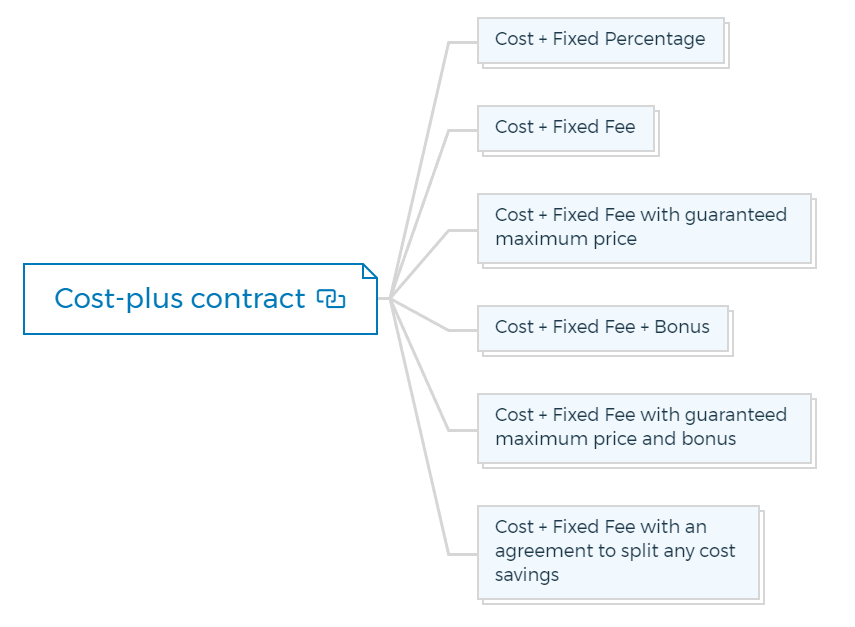
Cost + Fixed Percentage
Payment is based on a cost percentage.
Cost + Fixed Fee
Payment is based on a predetermined price independent of the ultimate project cost. The developer promises to pay the contractor's actual expenses, regardless of the amount, and a negotiated fee that is not contingent on the actual costs.
Cost + Fixed Fee with guaranteed maximum price
Payment is based on a fixed sum of money. The total cost of the project will not exceed a predetermined upper limit.
Cost + Fixed Fee + Bonus
Payment is based on a predetermined amount. A bonus is provided if the project is completed under budget or ahead of schedule.
Cost + Fixed Fee with guaranteed maximum price and bonus
Payment is based on a predetermined amount. The entire project cost will not exceed an agreed-upon upper limit. A bonus is granted if the project is completed under budget or ahead of schedule.
Cost + Fixed Fee with an agreement to split any cost savings
Payment is based on a set amount of money. Any cost savings are split between the contractor and the developer.
Contract for design and construction
The developer awards the entire project to a single contractor in a design and construct (D & C) contract. The contractor is responsible for all design and construction work to finish the project once signed.
This contract requires the contractor to hire all the architects and engineers needed to perform the design job.
The developer retains the ability to approve or reject design ideas but is no longer in charge of the design team's coordination or management. The contractor oversees the construction process after the developer has approved the design.
Many developers favour this style of contracting since it allows them to work on tight deadlines. The final project can be completed faster, with a faster return on investment. The design process can be divided into several stages.
The following are some of the benefits of a D & C contract:
- Single point of responsibility
- A shorter period for design
- Construction drawings that have been simplified
- A tightened construction schedule
- Variations are reduced to a bare minimum.
- Easily adaptable project to actual site circumstances
- A higher level of cost certainty, which makes the task more appealing to lenders
- Fewer conflicts between the developer's team and the contractor
- Overlapping design and construction programmes
- Fewer extensions of time
D&C contracts also have some drawbacks, that are -
- The project's outcome may fall short of expectations.
- A project that is not scheduled correctly may face significant delays.
- These agreements have no bearing on labour expenses.
- The final cost may be more than the initial estimate.
- It is not possible to employ an integrated design.
- The architect's design may appeal to the contractor.
- Problems can arise if the contractor does not have an experienced crew. These problems can be costly.
Alternatives to the regular D&C contract include the following:
Turnkey: The contractor designs, finances, and completes the project. The developer pays the entire cost of the building at the end of the project. The contractor passes over the key to the developer.
Bridging: To get property development approval, the developer hires their architect and advisors to draft the preliminary design. The contractor is then given the authorized plan to finish the rest of the project, either with the same design team or on their own, and complete the construction process.
Unit price contract
In a unit pricing contract, the developer and the contractor agree on the price per unit for the project's primary elements. The quantity surveyor representing the developer usually provides estimated quantities for the project, then asks contractors to bid on it by giving unit prices for these components and computing a final price.
The unit pricing includes contractor overhead, profit, and other project expenses. After that, the developer compares the final prices and chooses the lowest bidder.
The benefit of this contracting strategy is that it is difficult to measure the work required in many projects correctly. Estimating the amount of rock versus earth that needs to be dug when excavating might be challenging.
The quantity surveyor will calculate the amounts and then ask the contractors to offer a unit price for each type of excavation to avoid risk for both the developer and the contractor.
The actual volumes excavated will be multiplied by the unit price to determine payments.
This kind of contracting offers the developer a competitive, fair, and reasonable price for the work. Due to unforeseen site constraints, it also reduces the risk of agreeing to a fixed price only to renegotiate.
Work can start before the design is finished with this contracting method, which speeds up the process.
Contract with a guaranteed maximum price
A guaranteed maximum price (GMP) contract is a cost-type contract (sometimes known as an open-book contract) in which the contractor gets paid for actual costs plus a predetermined fee subject to a price ceiling.
Unless the GMP has been expanded via formal variation, which can only occur due to new scope from the developer, not price overruns, errors, or omissions, the contractor is accountable for cost overruns.
Cost overruns result in savings that are returned to the owner. This contract differs from a fixed-price or lump-sum contract, in which the contractor usually keeps the cost savings and turns them into further profits.
Tendering stage
Tendering is a better way to achieve the best pricing for a project than negotiating a contract. Tendering is the process by which interested parties submit an offer, bid, proposal, or show interest in response to a tender invitation or request.
Developers will look for construction building contractors to respond to their unique property development or building, and they will choose the offer or tender that best fits their needs and offers the best value for money.
Tenders can be offered using the following channels:
- Expressions of interest (EOI): Used to narrow down potential contractors before requesting formal proposals.
- Request for information (RFI): Used to help define the project during the planning stage, but not pick vendors.
- Request for proposal (RFP): A creative or flexible solution is required when the project criteria are known.
- A request for tender (RFT): A public advertisement invites all contractors to submit a bid.
Tenders are divided into three categories:
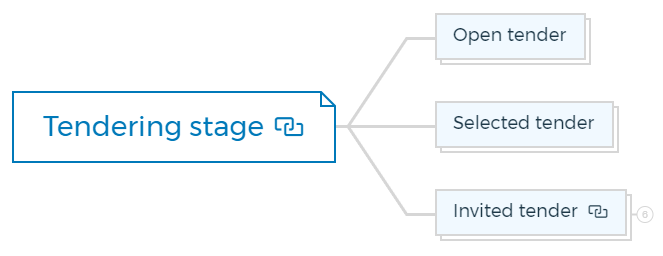
Open tender
An open tender is a public advertisement that invites people to bid on a project. Contractors must submit all required information and be evaluated against the given selection criteria. There are no restrictions on who can offer a tender.
Selected tender
One that is only open to a limited number of contractors. Contractors are chosen through an open tender or the architect or project manager's suggestion.
Invited tender
The developer personally approaches a small number of contractors and asks them to complete the contract. It's usually reserved for specialised labour, emergency scenarios, low-value, low-risk, and off-the-shelf alternatives.
The tendering process is divided into six steps:
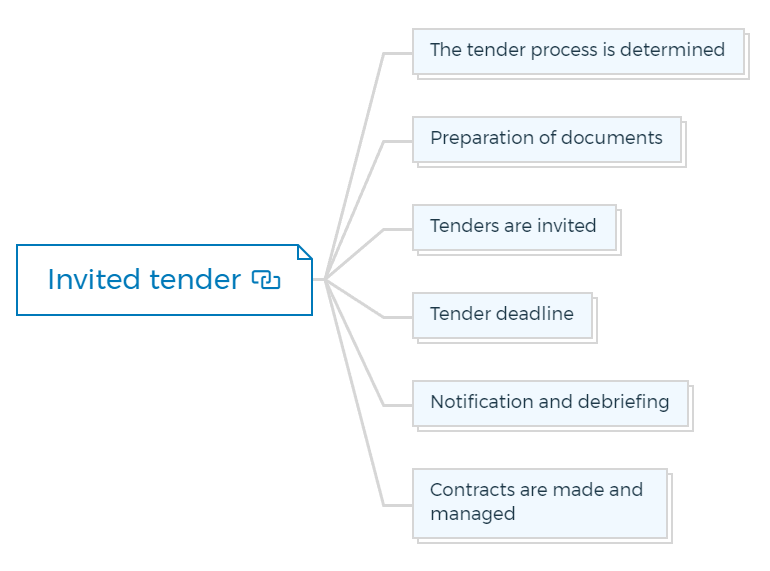
The tender process is determined
The sort of tender to be used and what will be engaged in the tender process will be determined by the developer and development team requesting the tender.
Preparation of documents
The designs and specifications and the contractual terms and conditions, and how the tenderer should reply are all included in the tender documents.
Tenders are invited
The developer and architect should agree on which contractors will be asked to submit tenders.
Tender deadline
The tender documents specify a deadline by which all tenders must be delivered, and any late tenders are rejected. The tender prices are usually readout, depending on the type of tender.
Notification and debriefing
After a contract has been granted, the winning tenderer will be notified in writing. Tenderers who were unsuccessful are also informed of the outcome.
Contracts are made and managed
Once the developer is satisfied with everything, the construction building contract is placed. Before work begins on-site, there is a need to sign a contract document.
Bottom line
Depending on the contractor chosen for the project, the construction process can be pleasurable or a nightmare. When a problem arises on the job, a positive contractor will look for a solution.
Still, a litigious contractor may submit a low tender price to obtain the job and then try to make ground through changes or delays. It is preferable to avoid the latter sort of contractor, which can be accomplished by following the steps outlined in this article for selecting a contractor.
Achieve success in your first or next property development project through these structured property development courses.
FAQs
How do I find a reputable contractor in my area?
Start by asking around for recommendations from family and friends. Once you've gathered a few names, do some online research to see if any of the contractors have been sued or have had complaints filed against them.
Finally, be sure to get quotes from several different contractors before making a final decision. Be sure to read the fine print before signing any contracts, and make sure you understand what is included in the work that will be done. Choosing a reputable contractor is an important decision, so take your time and do your homework before making a final choice.
What are the tips to negotiate with a construction contractor?
1. Know what you want and be clear about it.
2. Be reasonable in your requests - don't ask for something that's out of the contractor's budget or scope of work.
3. Don't be afraid to bargain - the contractor may be willing to come down on price if they know you're serious about hiring them.
4. Remain calm and professional throughout the negotiations - raising your voice or becoming angry will only make things more difficult.
5. Have a backup plan in case negotiations fall through - this could mean finding another contractor or postponing the project altogether.
Why should you hire a construction contractor?
Hiring a contractor is the best way to ensure that your property development project will be completed on time, within budget, and to your satisfaction. A qualified contractor will have the experience and expertise to handle every aspect of the project, from obtaining permits and ordering materials to arranging for subcontractors.
Plus, a good contractor will keep you informed about the progress of the project and will work with you to resolve any problems that may arise. By hiring a contractor, you can rest assured that your property development project will be handled professionally from start to finish.

